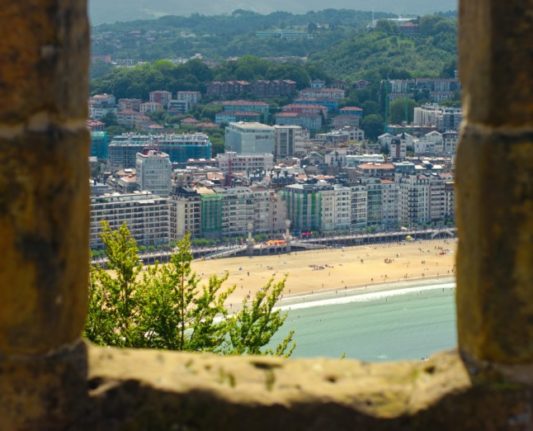EU targets Spain’s energy inefficient homes
Brussels is looking to prevent homes in Spain from being sold or rented out if they consume too much energy.
The European Commission’s “Fit for 55” plan will see Member States having to meet minimum energy standards for themselves by 2030, including for all types of residential properties with the exception of historical or religious buildings.
In practice, this means that Spanish homeowners with the lowest energy efficiency classification – G – will have to upgrade their homes in the next decade to gain at least an F certificate if they wish to sell their properties or rent them out to tenants.
Even though homeowners may have to foot part if not all of the bill, there are a number of home improvements Spain plans to offer tax deductions for, which you can read about below.
READ ALSO: Property in Spain: the home improvements you can get a 60 percent tax deduction for
Pandemic’s lease of life for ‘empty Spain’ wears off
With the advent of remote working during the height of the Covid pandemic, many Spanish families opted to move to the Spanish countryside to enjoy more space, peace and quiet to lower the risk of infections.
This has breathed new life into ageing and underpopulated communities referred to as ‘empty Spain’.
However, according to Ferran Font, head of research at Spanish property website pisos.com, the trend is gradually disappearing as Spaniards are again looking mainly for housing in large cities such as Madrid, Barcelona, Valencia, Seville, Zaragoza or Malaga.
“Cities, which have always been magnets for the housing sector – due to the leisure, job and training opportunities on offer – are back to being what people are looking for,” Font told online daily 20minutos.es.
“Empty Spain is becoming empty again”.
This increase in demand together with the rise in Spain’s consumer price index (IPC) means renting or buying in the big cities is again getting more expensive, after a year of sizable drops, particularly for the rental market, when tenants had the upper hand in terms of negotiating.
READ ALSO: Why you should negotiate lower rent in Spain in 2021 (and how to do it)
What will buying a home in Spain in 2022 be like?
As we reported in our last property roundup, September saw the biggest monthly property boom in Spain since the economic crisis of 2008, and the latest official stats show that the upward trend continued in October for the eighth consecutive month.
This increase in demand and the comparatively small pool of pandemic-proof residential properties available in Spain has seen prices grow by 9.5 percent over the course of 2021.
Most Spanish real estate experts agree that these factors, coupled with other factors, will mean this scenario will be largely replicated in 2022.
“According to all the indicators, the gross disposable income of Spanish households is growing, and it seems that this upward path will continue in 2022, as well as the low cost of financing and an attractive profitability of rental housing,” head of Alfa Inmobiliaria Jesús Duque told Spanish property search giants Idealista.
Duque does not believe that 2022 will be a year of large price increases, at least in second-hand housing.
“Another very different thing altogether are new-build homes, which are subject to fluctuations such as increases in materials, or the difficulties in finding adequate labour,” he added.
According to Ferran Font of pisos.com, “empty flats in Spain are not where there is more active demand”.
“The imbalance between supply and demand caused by the lack of stock of new builds and the shortage of new projects will set the sales rhythm in 2022,” Raúl Guerrero, CEO of Spanish developer Gestilar, told Business Insider.
Understandably, there isn’t exact consensus among property experts about how much more expensive Spanish homes will get next year. According to Gonzalo Bernardos, Associate Professor and director of the Real Estate Master at the University of Barcelona, average “prices will rise by 10 percent in 2022”.
How to sell Spanish property in days
According to Idealista, it takes on average 10 and a half months to sell a property in Spain. But are there ways of cutting that time short?
Logically dropping the price plays a major role, with Spanish property experts saying a drop of 20 to 30 percent can shorten the average ten months by half.
But according to Spanish website helpmycash.com, one of the best options to really speed up the process is using an iBuyer – or Instant Buyer – a company that specialises in buying homes cash from those who need to sell their home urgently, putting in an offer within 24 hours.
Instant buyers have just started to make an appearance in Spain over the past couple of years, with Italian firm Casavo and Tiko the biggest players currently.
The advantages are the quick sale, big saves in administrative costs and immediate full cash payment.
But the downsides include that Instant Buyers buy below market price (generally 8 to 10 percent below), they only currently operate in some big cities in Spain, there isn’t enough competition for sellers to choose from and their price offers are usually non-negotiable.
Alternatively, estate agencies continue to be a way of completing the sale process faster, who in most cases find a buyer in 30 to 60 days, but do charge anywhere between 3 and 7 percent of the price of the property in commissions.
READ ALSO: The best tips for buying a property in Spain without an estate agent (and avoiding scams)




 Please whitelist us to continue reading.
Please whitelist us to continue reading.
Member comments